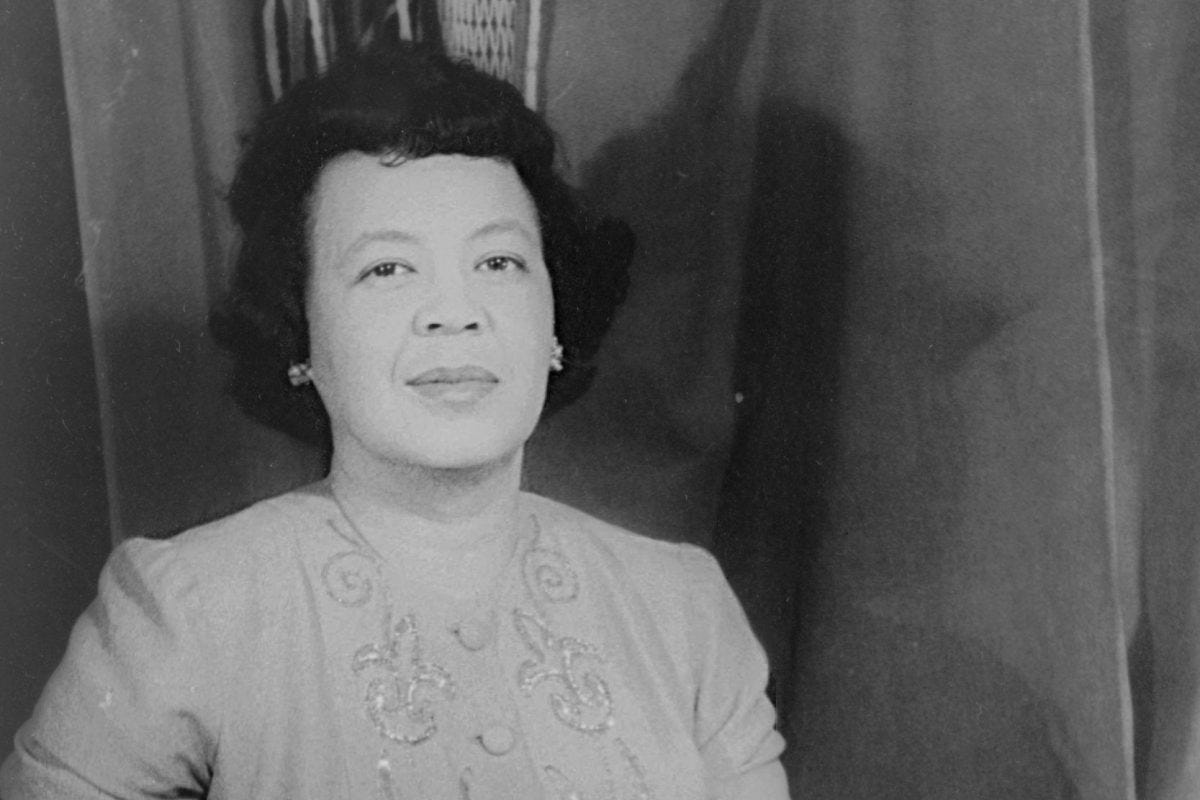
Margaret Bonds was born in Chicago in 1913 to the physician and leading civil rights activist, Monroe Alpheus Majors, and Majors’ second wife, Estelle C. Bonds. Their home was frequented by many leading black intellectuals, including the composers Florence Price and and Will Marion Cook. Bonds showed aptitude on the piano and began composing at age five. She would eventually study composition with Price and William Dawson.
Bonds attended Northwestern University, one of the first African Americans to do so, receiving her bachelors and masters degrees in Music. While there, she received the Wanamaker Award for her song, Sea-Ghost. She was a formidable pianist and performed Florence Price’s Piano Concerto in D Minor in 1933 with the Chicago Symphony Orchestra.
In 1939 she moved to New York City, studying piano and composition at the Juilliard School, and befriending the great Langston Hughes. She would set many of his poems to music and one of the first was, The Negro Speaks of Rivers.
She quickly became a prominent piano teacher in Harlem and created the Margaret Bonds Chamber Society, a group of black musicians who performed the work of mainly black composers. One of her major works for soloists, chorus and orchestra is The Ballad of the Brown King from 1954, with words by Langston Hughes.
Another important work from this time, with words from Langston Hughes is Three Dream Portraits, from 1959.
In 1965, during the Freedom March on Montgomery, Alabama, Bonds wrote her Montgomery Variations for orchestra, dedicating them to Martin Luther King, Jr.
For the last couple of years of her life, Bonds lived in Los Angeles, teaching at Los Angeles Inner City Institute. Zubin Mehta commissioned and premiered her Credo for Chorus and Orchestra in 1972. I could not find a performance or a recording of the Credo…a worthy project to undertake!
Bonds unexpectedly died just a few months after the premiere of Credo and a few months shy of her 59th birthday.
